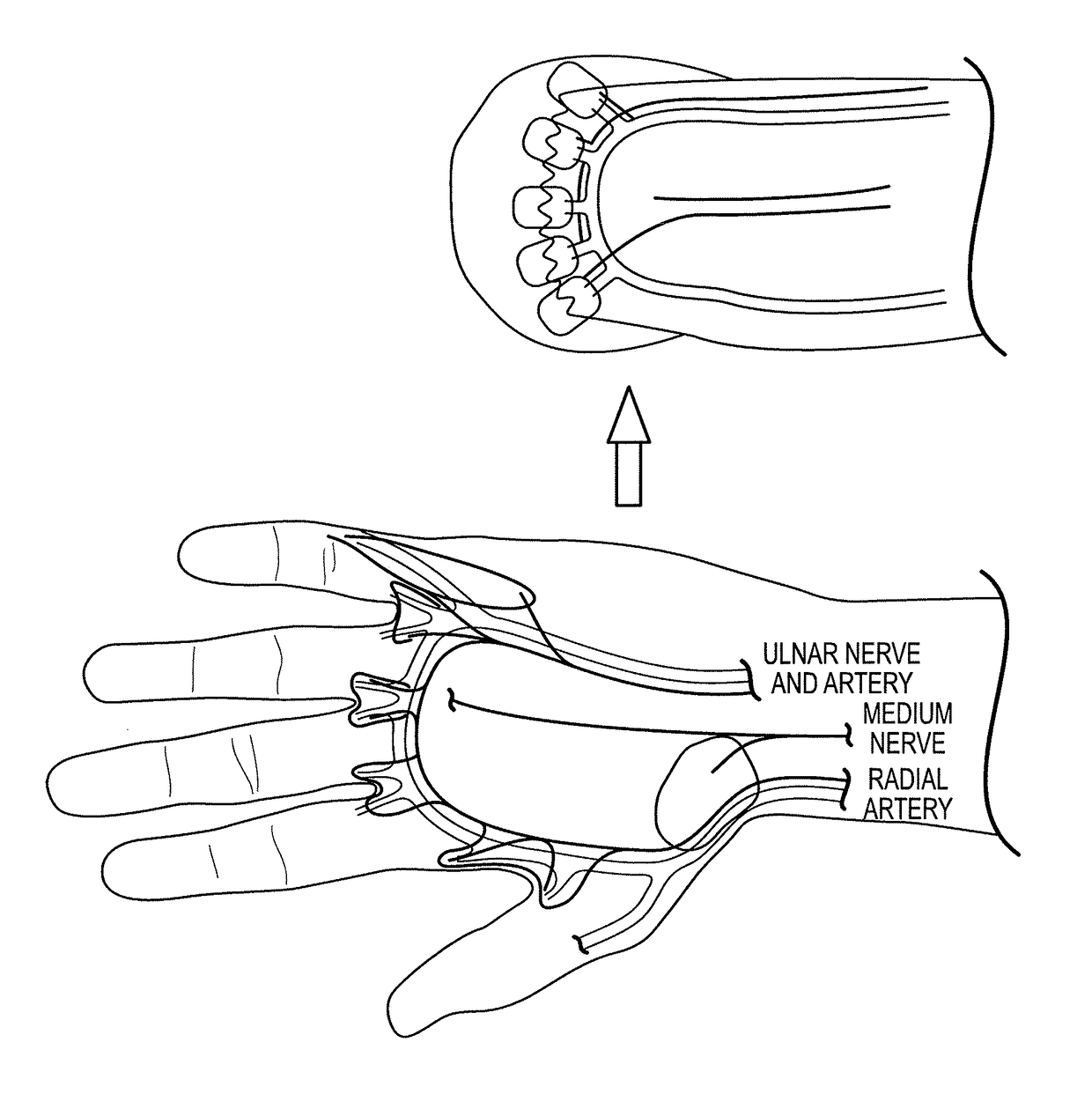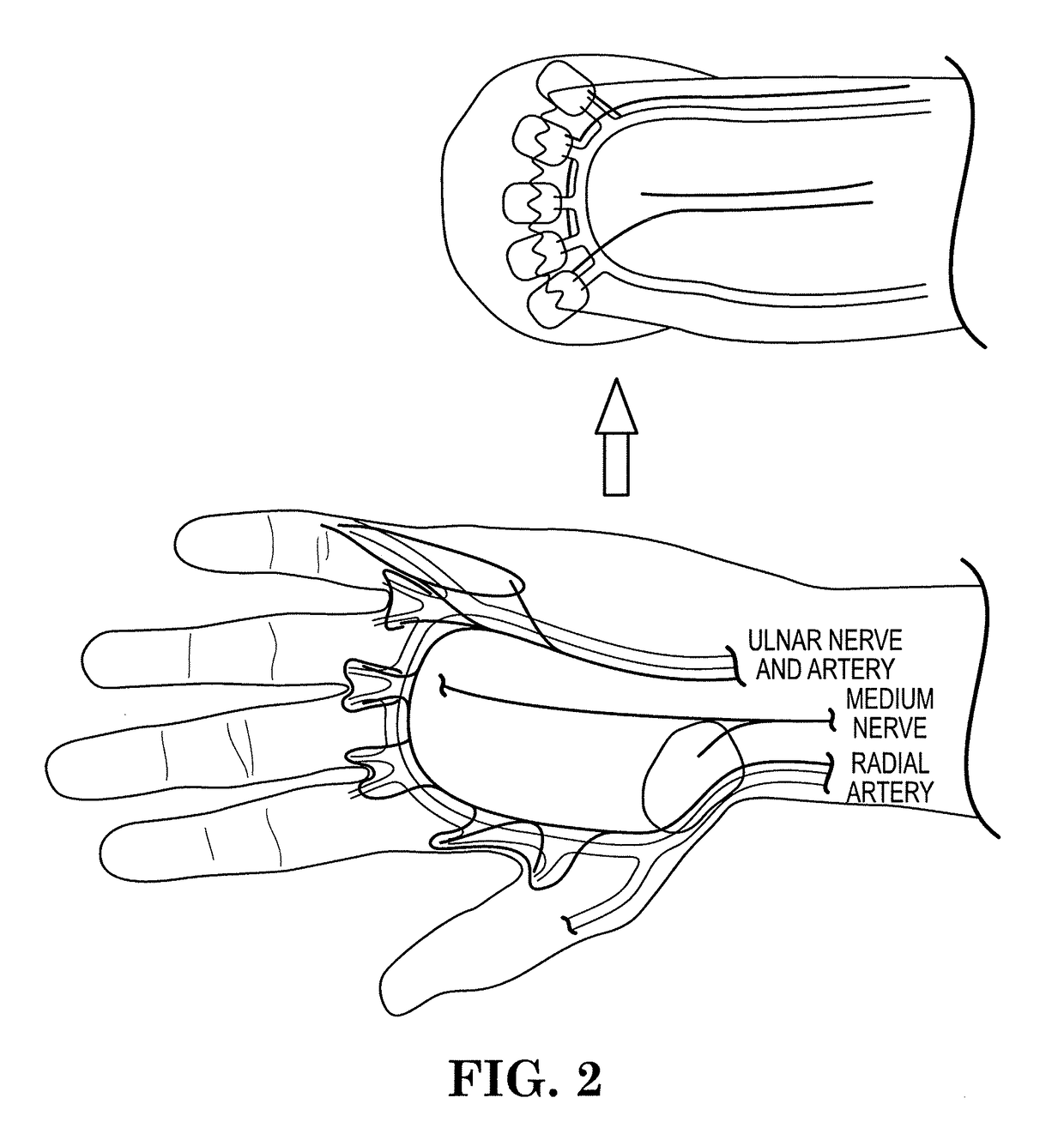Myoelectric prosthesis and method
- Summary
- Abstract
- Description
- Claims
- Application Information
AI Technical Summary
Benefits of technology
Problems solved by technology
Method used
Image
Examples
Embodiment Construction
[0032]In describing the invention herein, an understanding must be made that this invention is a surgical technique without which a new generation of prosthetics would not be possible. Those prosthetists adept in upper extremity prosthetics will have unparalleled new functional degrees of freedom to offer patients that have undergone surgeries using the techniques described in this invention. While some newer prosthetic designs may be required such as: multichannel microprocessors, multiple motor drivers, multiple EMG inputs, new more powerful or longer lasting power systems, new housing units for the electronic components, new socket designs, and some new componentry to allow these new degrees of freedom, the requisite for all of this is the invention of the surgical technique to provide the necessary signals for detection.
[0033]For partial hand amputations, we have demonstrated that the transfer of the interossei muscles to the dorsum of the hand can provide the necessary signals ...
PUM
 Login to View More
Login to View More Abstract
Description
Claims
Application Information
 Login to View More
Login to View More - R&D
- Intellectual Property
- Life Sciences
- Materials
- Tech Scout
- Unparalleled Data Quality
- Higher Quality Content
- 60% Fewer Hallucinations
Browse by: Latest US Patents, China's latest patents, Technical Efficacy Thesaurus, Application Domain, Technology Topic, Popular Technical Reports.
© 2025 PatSnap. All rights reserved.Legal|Privacy policy|Modern Slavery Act Transparency Statement|Sitemap|About US| Contact US: help@patsnap.com



